Europe is a treasure trove of all from the medieval, the ancient to the baroque and the art nouveau, thanks to its history and its cultural overlaps.
Combine it with Arctic conditions in the north and lovely Mediterranean climate in the south, and the main beauty of civilization that it is located on this glorious globe has a whole round of existence.
Here is a list of Europe’s top tourist attractions:
No 25. Pisa’s Leaning Tower

The world-renowned leaning tower is known all over the world for its amazing four-degree inclination which appears to have caused the tower to stand out. Behind Pisa cathedral is the beautiful sloping bell tower, which was planned in a romanic style.
The tower dated back to the 12th century, but started to decline during the construction, on the one side by the soft ground, after an immense span of 199 years. Currently, the 55.86-meter-high tower draws visitors from a wide spectrum.
No 24. Bruges Canals

The roads that connect the city have long been the arteries of the old town and the Bruges Canals. In order to move essential goods and supplies around the cität, the canals were dug from a stream for commercial shipping.
The inner canals of Bruges mark the old walls of the city and its ramparts and make it a lovely place to explore by foot or by boat. Take a cruise over various old bridges, pass across small streams and experience the beautiful houses along the banks of the river.
No 23. Cliff’s of Moher

The Moher Cliffs are an amazing sight in Ireland’s County Clare. There is a sheer 214 meters of rugged coastal cliffs that are 14 km high. The islands of Aran can be seen in sparkling waters from the peak of the cliffs. The coastal walks along the cliffs make for an amazing walk through the natural environment, where the castle-like cliffs can be seen. Many stories and folk stories have been covered in the cliffs, and many films such as Harry Potter featured them.
No 22. Pompeii

The devastating effect of Mount Vesuvius came out in 79 AD. The explosion completely destroyed several small villages and towns in the area, not least Pompeii. Ironically, the buried layers of ash which fell from the volcano have caused an unbelievably well-preserved picture of a Roman city that froze in the midst of a catastrophe.
The site has been rediscovered and excavated since 1764, although some valuables were brought up through centuries. Today, visitors can give a walk through the old town and wonder at the colourful walls, and view in their final moment the plaster casts of humans and animals.
No 21. Meteora

Meaning “big” in Greek, Meteora is in northern Greece a jutting rock formation, a wild scenery consisting of hilly blocks that overshadow the skyline. Nevertheless, the monasteries which precariously cling to the rocks form part of what makes this magnificent countryside so beautiful.
This holy site dates from the 15th century and some tourists are still greeted by the cliffs with staircases which were carved into the very stone itself.
The Holy Trinity Monastery, the most famous of all, stands 400 meters above a natural tower and is a wonderful view.
No 20. Christian Church

The legendary Catalan artist Antoni Gaudi is an accredited architect of Basilica de la Sagrada Familia, the popular opulent church in Barcelona. The Sagrada remains incomplete with construction starting in the Church back in 1882, 137 years later, in 2026, the building is expected to be completed. The fantastic church is constructed in artistic nouveau and gothic styles
No 19. Tallinn Old City

Tallinn Old City was once an extremely prosperous town, part of the Hanseatic League’s trading alliance. In the Old City, which still retains its 13th-century town layout, can be seen the secrets of Tallinn’s history.
Authentically medieval, the cobblestone streets feature fantastic merchant houses and churches.
The city hall area, host to the Gothic town hall, is one of the best sights of this cultural and historic centre of the Estonian capital. The oldest church in Estonia, the cathedral of Saint Mary of the Virgin of the 13th century, is located in the other region. There are also many restaurants and stores to enjoy today, not just the historic buildings that make the area so beautiful.
No 18. Tower Bridge
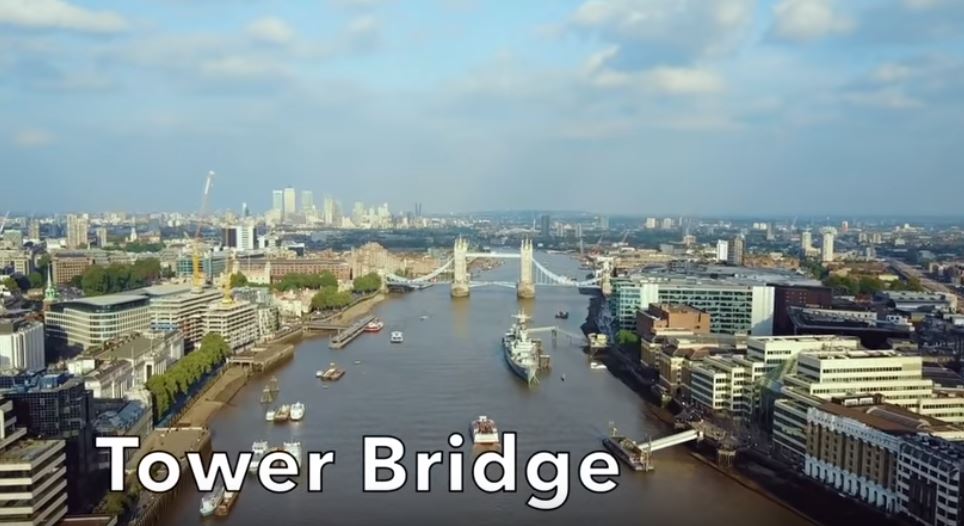
Tower Bridge the late Victorian masterpiece of Tower Bridge, often mistakenly thought to be a London Bridge, shows the height of London’s world position.
Inaugurated in 1894, the bridge spans the River past the London Tower. The bridge is a pathway inspired by chambers located in the north and south neo-Gothic towers, making this an achievement of engineering from the 19th century. The bridge is still in use today and was even modernized with evening lighting.
No 17. Neuschwanstein Castle

Neuschwanstein Castle is the quintessential fairytale Castle, one of the building designs by the “Swan” King Ludwig II of Bavaria. In fact, Walt Disney Sleeping Beauty Castle was inspired by the flourishing spires of the castle and the romantic revival style. The construction of the castle started in 1869, but sadly Ludwig never had to stay in his house; he died the very year that the castle was completed in 1886. The picturesque atmosphere of the castle is just as stunning in South Bavaria, amid wooded mountains and mirror-like lakes are few of its magnificent attractions.
No 16. Mont Saint-Michel
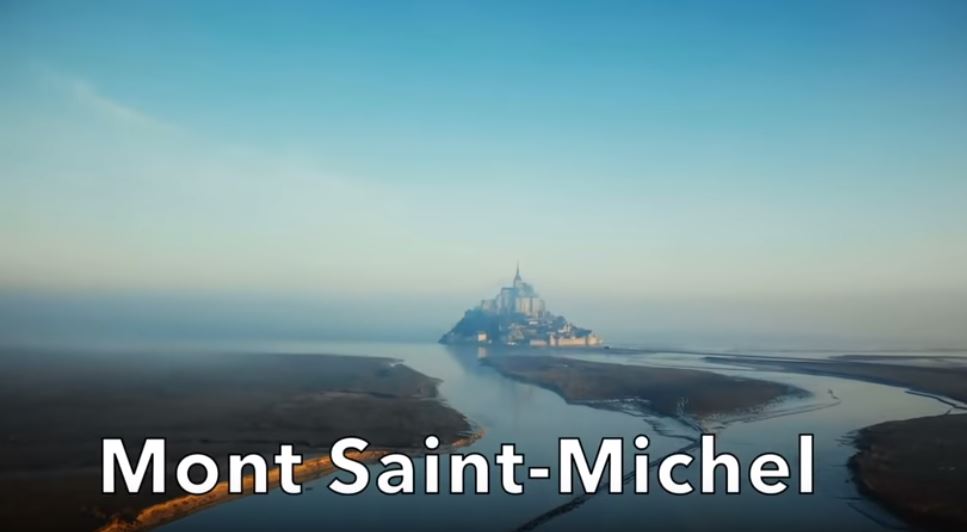
The famous fortified island of Mont Saint-Michel is about one kilometre from the Northwest coast of Normandy and is located in France. It could seem as if you had been carried back to another age by strolling through Mont-St-Michel; the monastery dates back to the 8th century and still stands today.
Intriguing areas to visit are the ancient walls and chapels. During high tide, the island seems to be a floating barrier in the water. The island can be accessed at any time on foot along a bridge built in 2014, historically on foot or by vehicle during the low tide.
No 15. Scottish Highlands

The Scottish Highlands is a rugged, mountainous region in northern Scotland. Scottish Highlands. In the stunning scenery of this picturesque city, there are many things to do.
Glencoe Valley is the hiding place for red deer and waterfalls; nearby is the highest peak of the United Kingdom in the Ben Nevis mountain range. In the Central Highlands, Loch Ness exists nearby and is the place to try and see the elusive Loch Ness Monster or just take a walk to admire the quiet environment. Inverness, the biggest city in the region, is also situated in the Scottish Highlands.
No 14. Bled Lake.
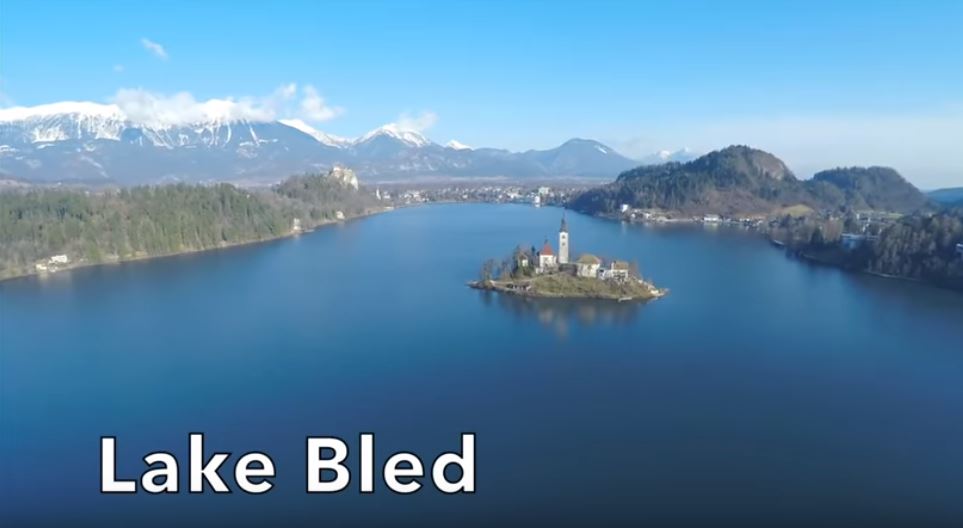
Near to the town of Bled is a shining emerald lake surrounded by amazing green hills in North-West Slovenia. Catch one of the old wooden boats in the middle of the lake to the remote Bled Island.
The church of the Assumption of Mary–a building of the 17th century with some gothic frescoes of the 15th century is still intact on the island. There is also Bled Castle, which is beautifully picturesque, but one of the best things to do in the town is simply walking around the lake and taking a break to swim in the tranquil waters.
No 13. St. Basil’s Cathedral
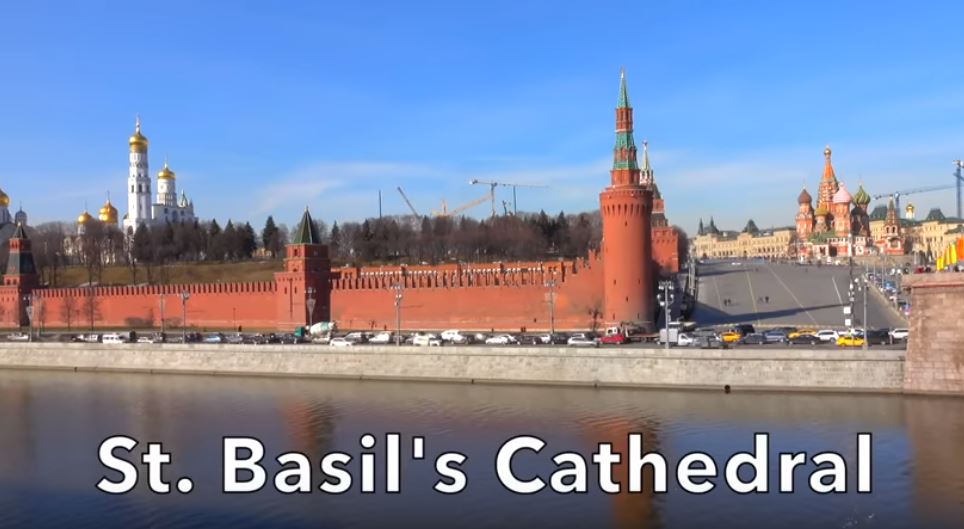
St. Basil’s Cathedral, which is perhaps the most famous in Russia, is situated in Moscow’s similarly popular Red Square, this revolving cathedral with its multicoloured onion domes.
In 1555, Ivan the Terrible constructed St. Basil’s Cathedral. The structure is a slightly bright lollypop of weird styles which look more like a fairyland and look different from anything else in Russia.
The cathedral is a landmark of Russia because of its unique architecture and its historical links with Tatarstan’s triumphant war.
No 12. The red-roofed marvel

The red-roofed marvel of St. Basil’s Cathedral, one of the most beautiful old cities in Europe, requires exploration. The old town walls climb to the Adriatic Sea. A myriad of pubs, cafes, boutiques and museums cover the cobblestone streets.
From the 16th century, baroque churches and collapsing buildings are on the stone walls. Pile gate was built in 1573 and marked the entry of the Old Town with its impressive Renaissance arches. The Dubrovnik cable car offers the chance to see from above the ancient streets of the city.
No 11. Amsterdam Canals

The Amsterdam Canals are famous for their canals. Yes, the Netherlands ‘ capital is surrounded by 100 km of canals containing nearly 90 islands, which includes 1,500 bridges. In the 17th century the Canals were used for shipping and as sewers as drinking water–a little of everything. The rivers led to Amsterdam as the Venice of the West.
In the modern city, the canals shape the magnificent urban landscape renowned for Amsterdam. The canals are lined by townhouses from the 17th century, contributing to their beauty.
No 10. Eiffel Tower

Eiffel Tower The unmistakable emblem of France, called after Gustave Eiffel, is a guide to the French capital. The tower was originally designed to form the magnificent gateway to the World Fair between 1887 and 1889.
The tower is 324 meters high and is the highest monumental structure in the world, impressive until 1930 when the Empire State Building won the title. Take the lift throughout the tower deck and wonder at the viewpoints of the boulevard of Paris and the arrangement of parks below.
No 9. Prague Old Town
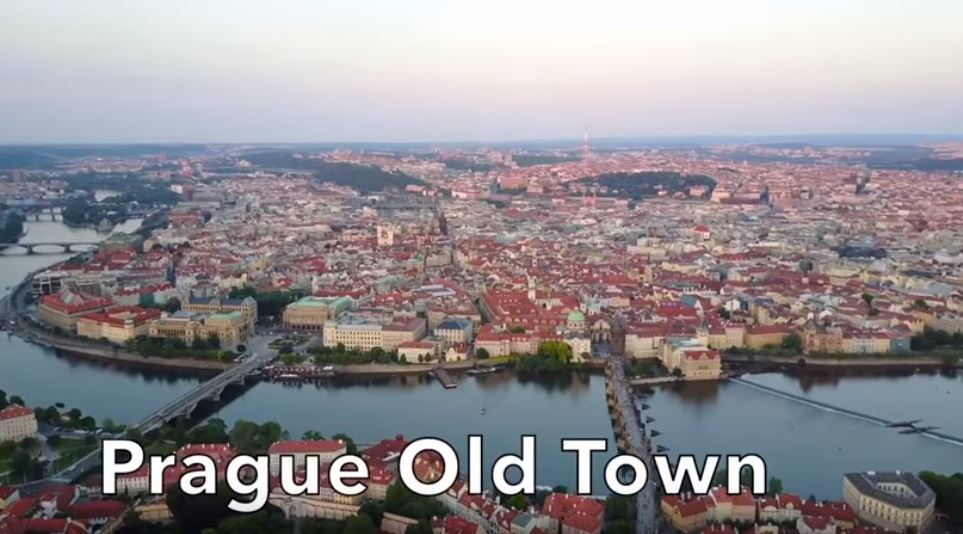
The medieval old town of the capital of the Czech Republic is full of historical sights, which render it so famous as the place to go. Prague Old Town, the Old City Square is situated at its heart, where the Old Town Hall is housed which contains an astronomical clock dated from 1410, rendering it the oldest clock in the country.
The Charles Bridge stands across the river from the old town to the Lesser Town of Prague. Bridges started in 1357 but were not completed until the beginning of the 15th century.
Various bars and a lively nightlife atmosphere around the Old Town make for a fun spot to stay after midnight.
No 8. Petrine Church

Situated in the heart of Vatican City, the Petrine Church is one of the world’s largest churches and one of Italy’s most famous examples of Renaissance architecture. The memorial was built in 1506, with no one but Michelangelo being one of the architects.
The Pope addresses the hundreds of thousands of adorers that swarm the surrounding Square of St. Peter. In 360 A.D., the new basilica replaced the former basilica of St. Peter was on the same location. It was believed that the church itself was built on St Peter’s crypt.
No 7. Venice Canals

Venice Canals is Venice’s first canal area, and Venice is the contrast between all the other canal cities in the world. It has over 150 dams and 400 bridges, including the Sighs bridge. The area is mysterious, with rivers and waterfalls.
The principal canal in Venice is the two-mile Canal, which stretches over St Mark’s Square and is bordered by the historical architecture of Venice.
Gondoliers punt takes visitors in streaked tops and large-scale capes, but river vessels are not only for travellers, and also are used for daily work, such as waste collection.
No 6. Versailles

Versailles is not like any other monument; it definitely takes first place when it comes to palaces. Between 1682 to the French Revolution of 1789, this grandiose house was the main residence for the French Royalty. The outside of the building is beautifully decorated, but it is not less spectacular in the interior.
Several rooms inside of the palace, like the Hall of the Mirrors with opulent gold decoration, are just as iconic as the Palace itself. The geometrical gardens are marked by conical trees that have been woven as canals and springs.
No 5. Fjord of Norway

Fjord of Norway, observing its majestic fjord is one of the greatest reasons many people visit Norway. The towering U-shaped valleys and the sculptured cliffs, shaped by glaciers over 2,5 million years or so, provide for an incredibly large landscape.
Norway has more than 1000 fjords that are reached just partially en masse, which ensures that a slice of silence can always be sought. Taking a cruise ship is a fantastic way of seeing the fjord walls as the water glides.
Escorting along the fjords provides a glimpse into the unbelievable landscape.
No 4. Alhambra

In 889, Alhambra is a castle and a stronghold in Granada, Spain, which was built on remains of Romanesque fortifications. For nearly 1,000 years, the Islamic Moors ruled much of the Iberian Peninsula and Andalusia is their longest-running territory.
You will visit today her citadel, the oldest part of her castle, walk up the watchtower, admire the beautiful Moorish gardens and courtyards and marvel at the complex’s delicate architecture. The atmosphere in the background is much more magical than Alhambra.
No 3. Hagia Sophia

Hagia Sophia has been the world’s largest cathedral for almost 1000 years and still has a wonderful lookout building. Originally built in 537 when Istanbul was called Constantinople as an Eastern Orthodox Cathedral, Hagia Sophia was an Ottoman mosque from 1453 and is now a museum of all religions.
The Hagia Sophia cathedral is a marvel in itself and the entire building reflects Byzantine architecture perfectly. Today you can wander around the house and tell the history of the city with its impressive walls and objects.
No 2. Acropolis Athens

Acropolis is just incredible. This majestic peak is the location of several ancient sites from the 5th century BC. The Temple of Athena Apollo, the Erechtheum and, of all, the Parthenon are some of the landmarks that surround the Acropolis.
The Parthenon is the emblem of Greece and stands out in its countless columns, constructed at the height of the Athens in 447 BC. The Acropole is lit by the light seen around Athens during nightfall.
No 1. Colosseum

The Colosseum is the perfect symbol of the Roman Empire’s dominance at its height. It was designed to accommodate 50,000 spectators from 72 AD and was the biggest amphitheater ever built at that period.
There, all manner of public performances were shown–from wildlife hunts and killings to gladiatorial fights in Glory; even for simulated sea battles, it was full of water.
The Colosseum is standing still, although it is almost a ruin, as an emblem in Rome. Take a tour of the building inside the arches. Sit down and imagine as a Roman viewer and the great shows and performances inside the arena.



